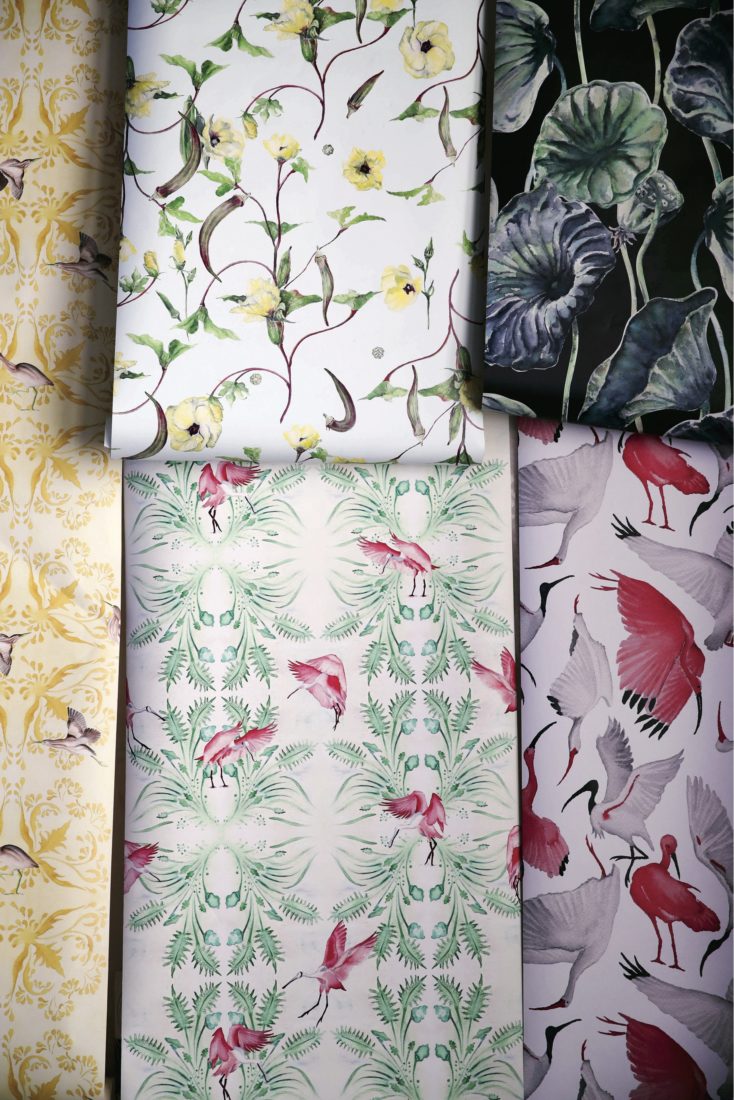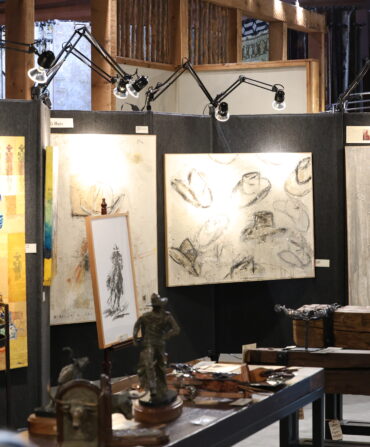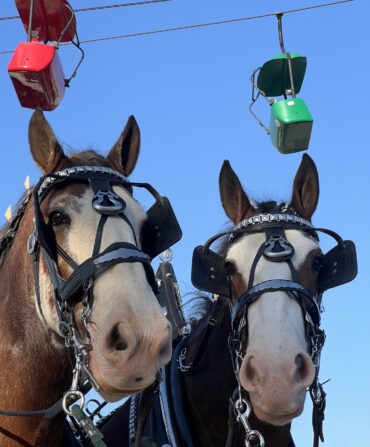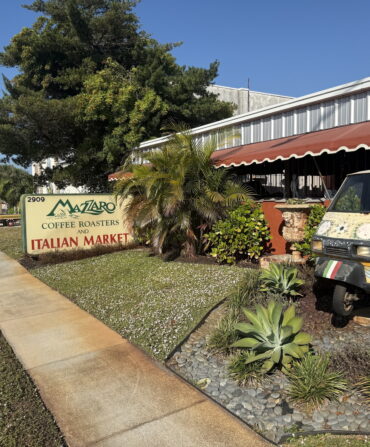Inside the Gentilly studio of the artist and designer Annie Moran, okra flowers twine up a clear blue sky. Nearby, lotus leaves unfurl, damp against dark water, while roseate spoonbills fluff their pencil-sketched feathers. A Zulu masker blows his whistle under a crown of plumes. New Orleans is as lush and alive on the wallpapers, textiles, prints, and murals Moran creates as it is on the streets and bayous beyond her doors.
“When I was little, I wanted to have an insect collection,” Moran says, handling a glass case full of iridescent feathers. “I was really into dragonflies. I’d find dead things and save them, wrapped up with cotton balls.” She shrugs. “I never really lost that obsession—I guess I just draw them now.”

Though she still keeps some dead things—pinned butterflies and dried flowers that serve as reference points and inspiration—the creatures captured in Moran’s work are full of life. The fleeting gestures of a flock of ibis become a wallpaper that seems to squawk and flutter. In a sketch, a heron crouches like a parasol over shallow water, blocking out the sun to better spot its prey.
Moran grew up in Cane River, Louisiana—also known as Isle Brevelle, a community founded as a sanctuary by and for people of color in the late eighteenth century. A descendant of one of Cane River’s founding families, Moran, as a girl, roamed the land her family had farmed for generations, scrambling down the muddy bank of the river to draw the jumping fish, the diving birds. “I spent a lot of time just staring at the plants, looking for four-leaf clover,” she says. “But it was the birds I was obsessed with—and bugs. Anything with wings.”
Moran’s father, Joseph Moran—an artist whose surreal and evocative work, steeped in the imagery of his ancestral home, resides in the permanent collection of the New Orleans Museum of Art—worked in a tin-roofed Creole cottage between cotton fields and cattle pastures, and Moran found herself pulled there every afternoon when school let out. “It was a magical place for me,” she says. “The walls were pinned with pictures torn from magazines—all kinds of cool-looking stuff—and so I started to go down there with my child art supplies, just to do something while he did something.”

Blessed with “the drawing gene” and guided by her father, Moran developed a free and intuitive style and a keen eye for the graceful drape of the okra flowers that bloomed in her grandmother’s garden and the undulations of the palmettos that swayed beneath the oaks. After twelve years as an accessories designer in New York for Kate Spade, Coach, and Henri Bendel, she returned to Louisiana and to her roots in painting, constructing patterns out of the flora and fauna that reminded her of home.
You might say New Orleans has welcomed her back warmly, but that implies that she could somehow be separated from the place by distance or time. The key to the city is hers, literally. Her concept for the key—which interweaves the imagery of ironwork and second lines, Congo Square and the Vieux Carré—won Mayor LaToya Cantrell’s design competition in 2019 and has already been presented to the likes of the musician Frankie Beverly and the family of the late Creole chef Leah Chase.

The community has embraced Moran, too: Last year, a booth displaying her watercolors won Best in Show for the Louisiana Marketplace at the New Orleans Jazz & Heritage Festival. Between exhibitions, Moran takes mural commissions and sells her work on her website, allowing anyone who so desires to float her lotuses on the walls of their powder room or turn their dining room into a swamp filled with the shadows of ghostly cypresses.
In 2018, when the Alice M. Harte Charter School commissioned Moran to create a mural in its cafeteria, she spent days on a scaffold, painting children at work and play in a Louisiana landscape much like the one beyond the school’s doors. Now the students eat their lunches beneath a stunning panorama of growth: a pelican hatches from an egg and soars off, a seedling becomes a cypress. As always, Moran’s art is more than part of its setting—it is the environment it grew out of. In Moran’s world, the walls become the world all around.
This article appears in the June/July 2020 issue of Garden & Gun. Start your subscription here or give a gift subscription here.








